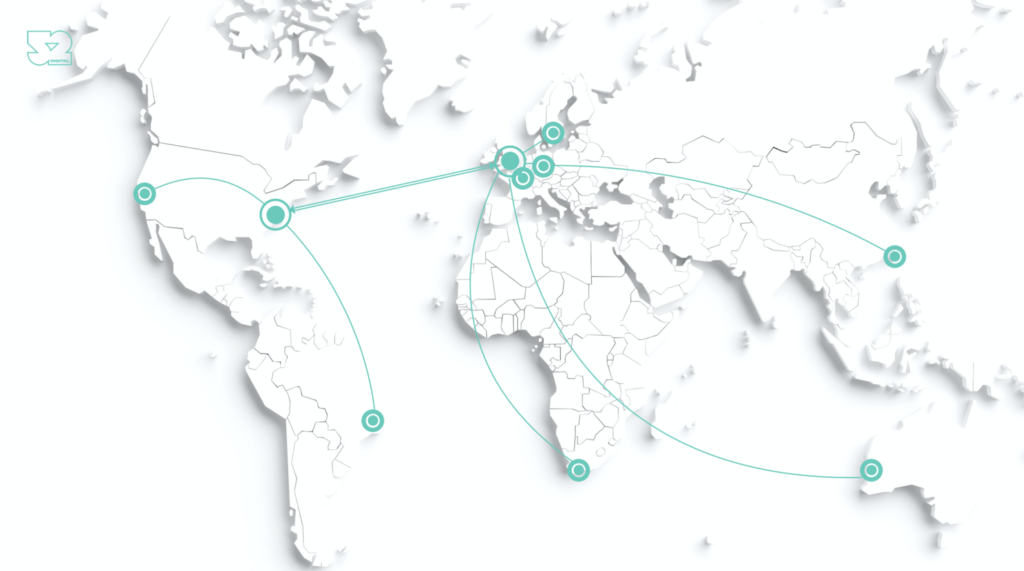Creating Private Market Events with Minimal Disruption
We have had many discussions with our clients over the last few months, about formats and decisions for their next event. Many of their thoughts and questions are similar:
- Should we postpone, so we can hopefully get more in-person attendees?
- What if LPs attend, but the heads of the funds or key partners can’t make it?
- Should we move it all online?
- Can we encourage people to attend by offering a better experience in person?
- Does it look irresponsible to our investors if we go ahead, spend the money and no one turns up?
All events should be hybrid from now on (if not 100% virtual). If an investor wants remote access to an AIM, they will expect it to be available: some may not be willing to travel internationally again. The online experience must be engaging – which doubles the workload and makes the process more challenging. Here are a few suggestions we have been sharing with our GP clients.
If an investor wants remote access to an AIM, they will expect it to be available: some may not be willing to travel internationally again

Postponing
This is a difficult decision. If new travel restrictions are being put in place and your event is in a couple of months, delaying will probably help or you will need to switch to virtual. One challenge with postponing is that you are usually kicking the can down the road, creating more work (requiring added resources for a longer period of time) and opening yourself up to another unforeseen issue that will still create dilemmas further down the line.
If your in-person event is in March and you wish to push it to June / July, there is a good chance you will get more people to attend. You need to watch out for other events that may complicate things, like SuperReturn – along with other GP postponements that could clash. On the whole, by delivering the event the first time around, you can get back to running the funds quicker. If you stick to the date, people are aware things are continually changing.

Part Online or Fully Virtual?
This is a more complicated decision. Once you go fully virtual – using production studio setups and mixing desks, you are going to set an online standard that will be difficult to come back from when things return to hybrid. We believe you should put the effort into creating quality content for people in-person and remote – more on that later.
Online events are more inclusive. Here is a relevant article on how virtual events in the scientific community improved attendance, diversity and inclusion while reducing the carbon footprint – ‘the carbon footprint of 7000 virtual attendees was estimated to be equal to one in-person attendee of an international conference in 2019′.
Virtual Platforms
There are many systems you can use to manage the experience online. You can build your own platform to host and manage all events, or you can use one of many out-of-the-box solutions – here is a selection worth reviewing.

Interactivity
We have found interactivity and participation to be limited at LP events. Polls and Q&As do not get the engagement you are looking for; as a result, the data is not a fair representation, so you often need to resort to canned questions or responses. Focus on the content and how you are presenting it. If an investor has questions they will follow up privately.

Prerecorded or Live?
Our recommendation is to choose a combination. We have heard of companies going completely pre-recorded (but broadcasting as live). We feel this is risky. Firstly the experience is too polished, you need the key characters to come across naturally in the segments that are live-streamed. Secondly, there is a risk of a large news event happening in the days building up to the event, which would be odd not to mention.
Another thing to consider is that pre-recorded content saves time. Once partners have delivered a recording they have less to do on the day and in the build-up. If you can get the broader presentations recorded and made available before a virtual event, then the live portion can be significantly shortened. This enables you to give the greatest hits summaries at the event on the day and point to more detailed presentations online if people require further information. For recordings, you could also then translate into other languages like Mandarin, Spanish or Korean for example and subtitles could also be added.

Picking a Venue
Even if your event is 100% virtual, you should still choose a location that enhances the occasion or reflects a key topic. Think about the sectors and strategies you focus on and the markets you are targeting. How can you select a venue to reinforce a particular theme? You can even use a building as a canvas to deliver your content during and post the event.
Your choice is either a production studio, setting up from your office and streaming, or choosing an event space such as a hotel or a building that delivers the right tone and message.

Broadcasting to Other Event Locations
We believe this is a format that has the potential to become the new standard. If you have chosen a venue or production studio, you can broadcast the event to all the locations your offices are located in and invite people locally to a mini version of the event.
Invite investors to come to their regional office or chosen location, watch the event live and go out for dinner afterwards. This minimises travel, emissions and risk if individual countries lockdown, and will enhance a more personal experience. So you could create a live link between London and New York, along with half a dozen other events being watched and happening at the same time around the world.

Contingencies
There will be likely cancellations on the day. If the cancellation is a Managing Partner that can prove to be complicated. Our suggestion is to use a platform like Riverside.fm to pre-record components if possible – particularly if someone is stuck in a remote location where the internet is not fast enough. People should be more understanding if things change on the day and someone becomes unavailable.

Repurposing Content
This is a huge area: we think firms can expand the reach and output of content from these events. Video content can easily be edited and repurposed for further use. Why not update your website sector videos or share case studies on LinkedIn? If you are interviewing partners, get them to discuss origination or due diligence on a particular portfolio company so you can create a video for your data room to use as a hook for fundraising.
If so much effort is being made to create this content it should not just be used for one day – similarly, if you are creating additional content bilaterally then you are using twice the resources and brainpower. If you produce most of your content for the year within this annual cycle, then you are making life simpler and more effective for everyone.
If you produce most of your content for the year within this annual cycle, then you are making life simpler and more effective for everyone

Agendas
If a majority of your audience is going to be online, you should consider shortening the agenda. Expecting people to turn up at 9 and finish at 6 is challenging. Our recommendation is that each segment should be 45 minutes or less – analytics show that anything longer and people start to drop off. Anything else can be pre-recorded material that is made available before or after the event.

Presentation Training
Bringing a speaker coach on board helps refine and improve how everything is delivered. It is always important to consider how people will be presenting themselves on the day. Given hybrid presentations are being made to different audiences at the same time, with multiple cameras and line-of-sight issues, it helps to have third-party support in creating a structure for revisions throughout the build-up and in rehearsals.

In-person Hooks
Meeting in person at these events is the ideal outcome: the experience and results will always be better. Why not create an agenda that favours the in-person guest. Incentivise them to attend with the experience of the location, more detailed breakout sessions, hospitality after the event, or other features that are not made available through online streaming. This is something we believe firms will have to finesse in the coming years.
